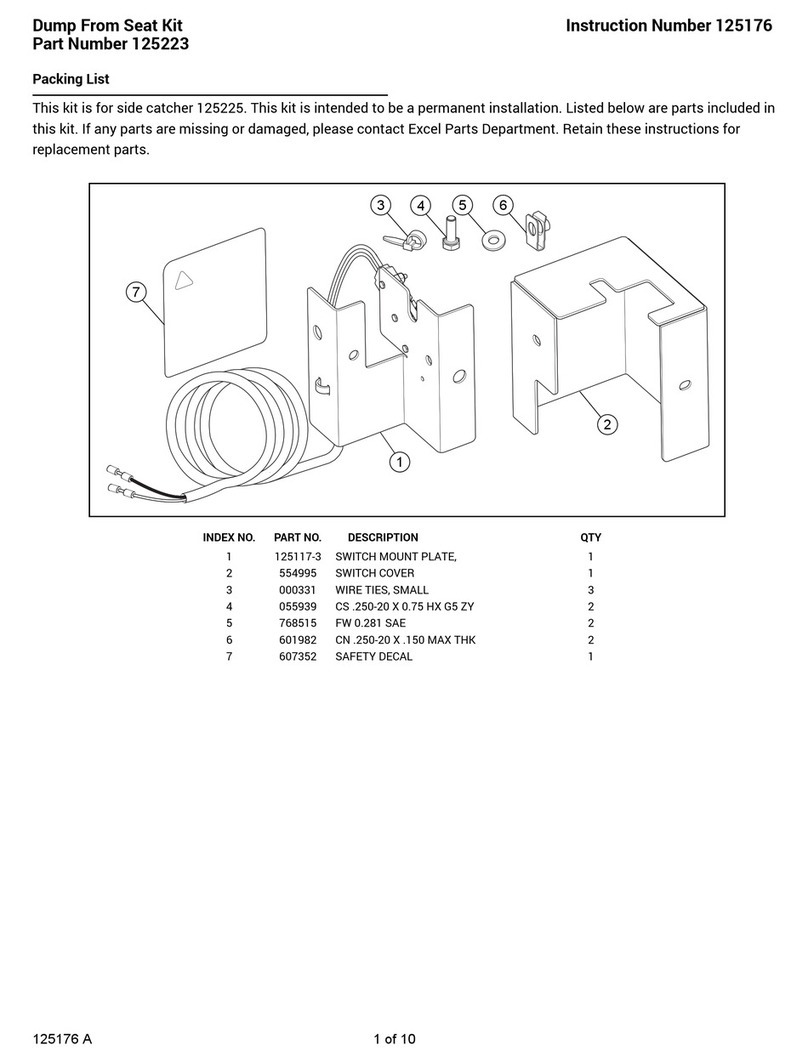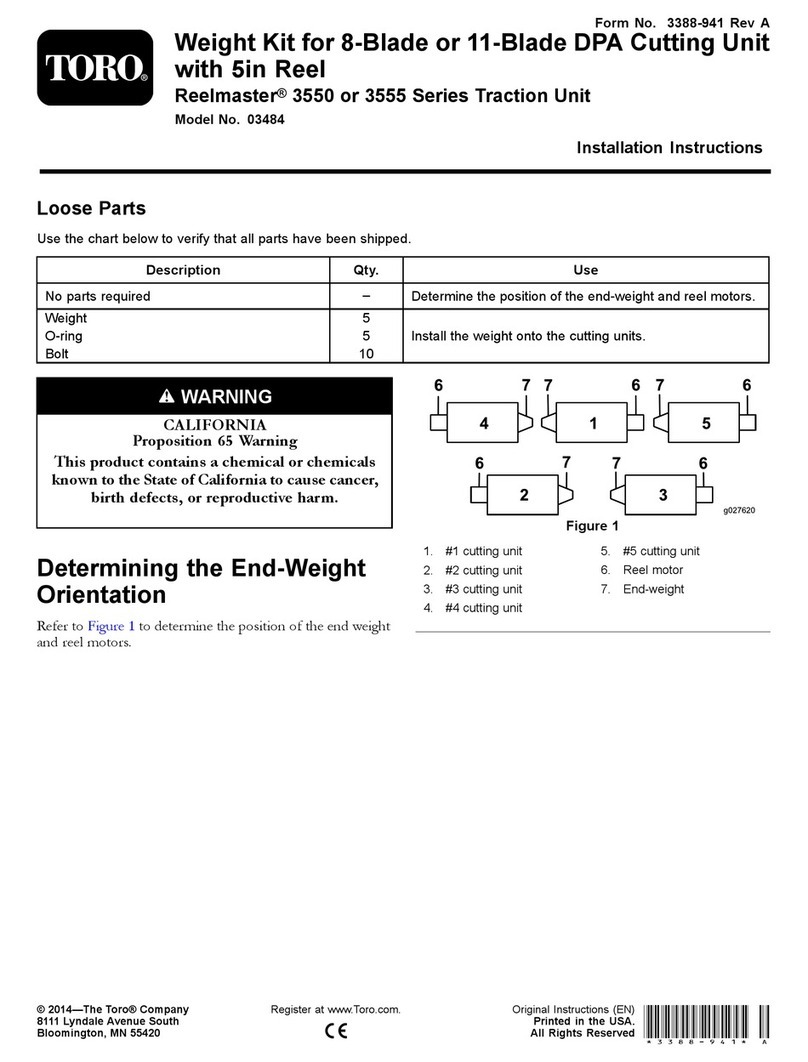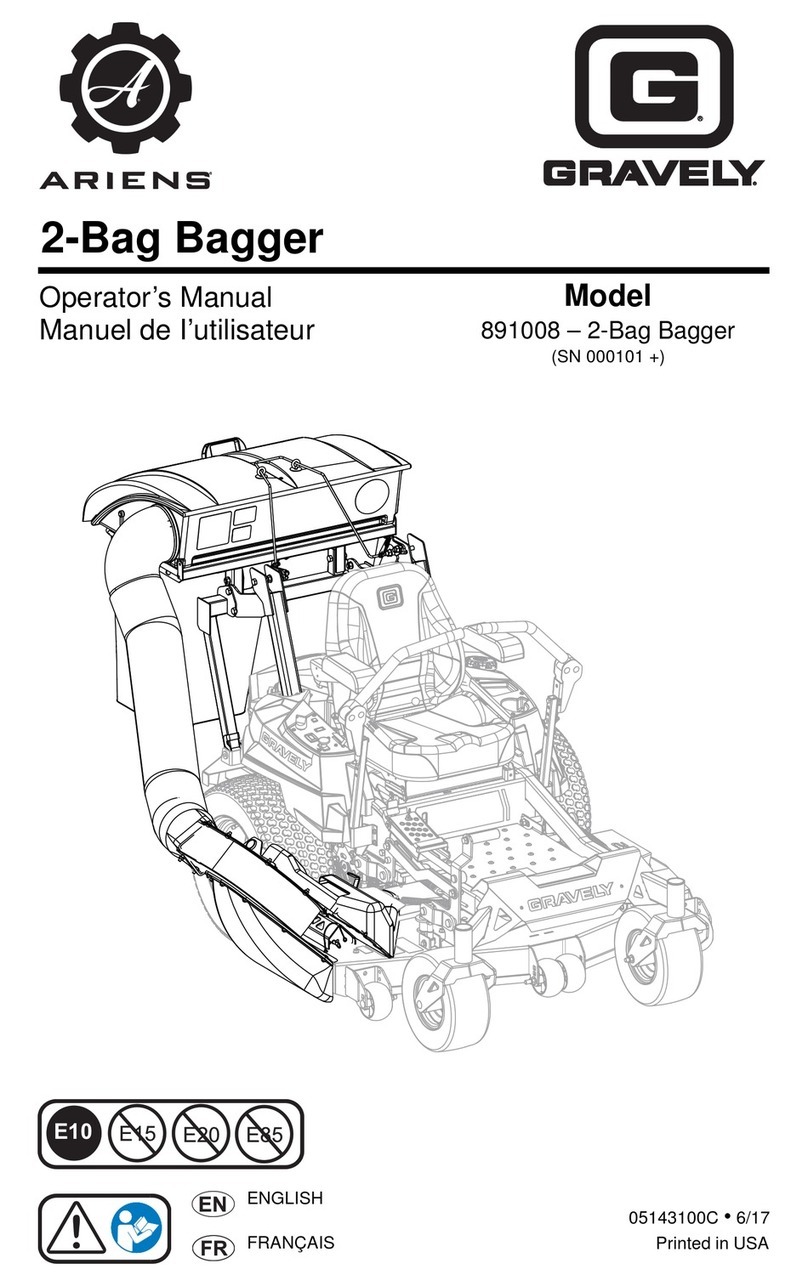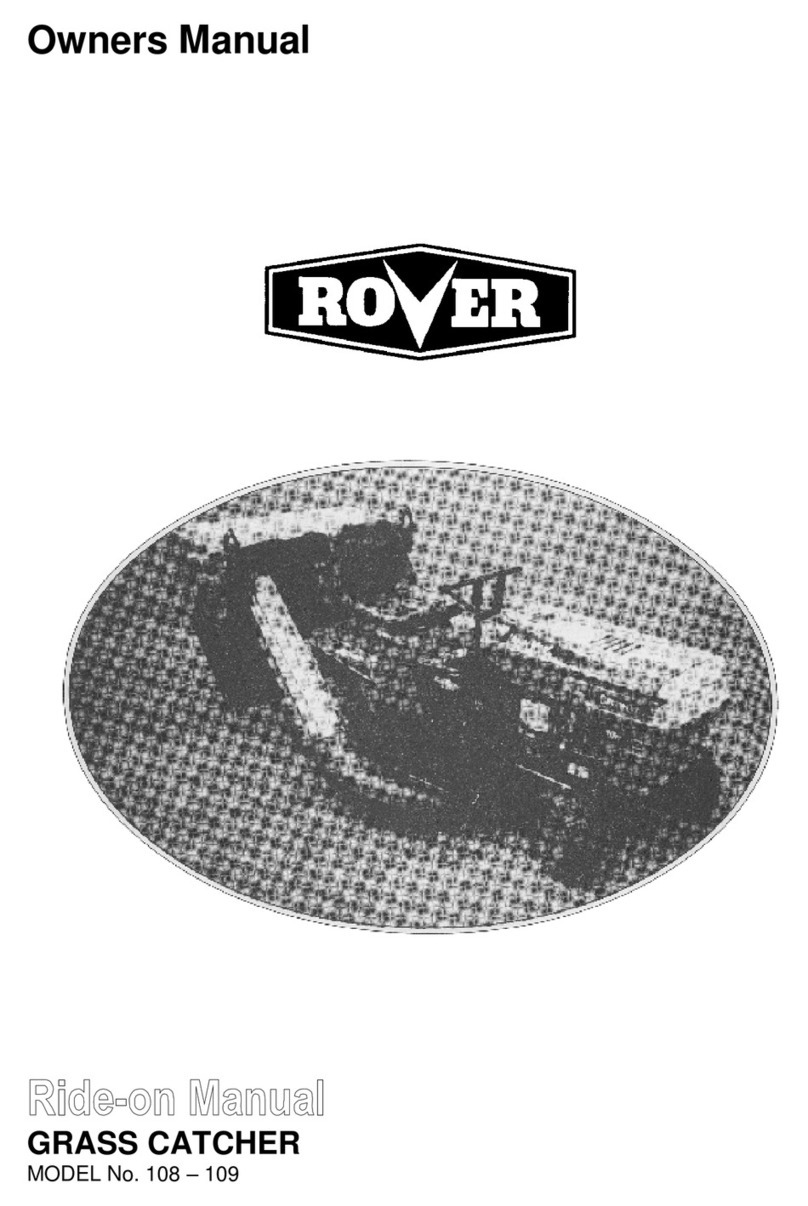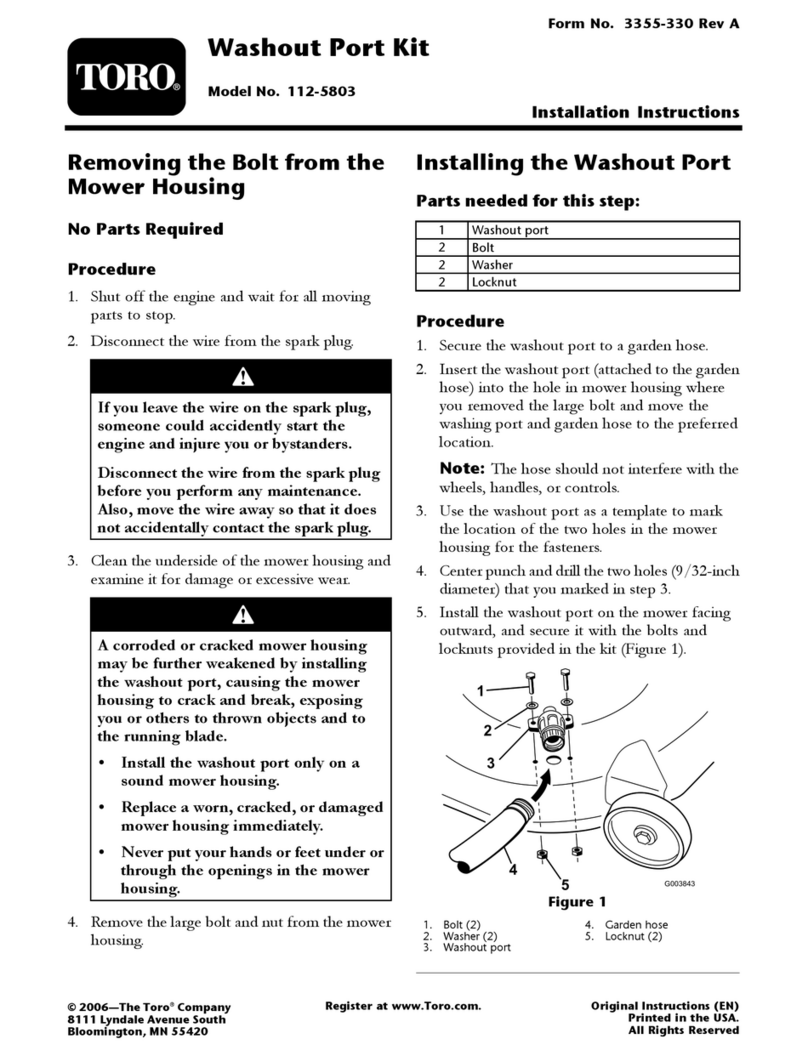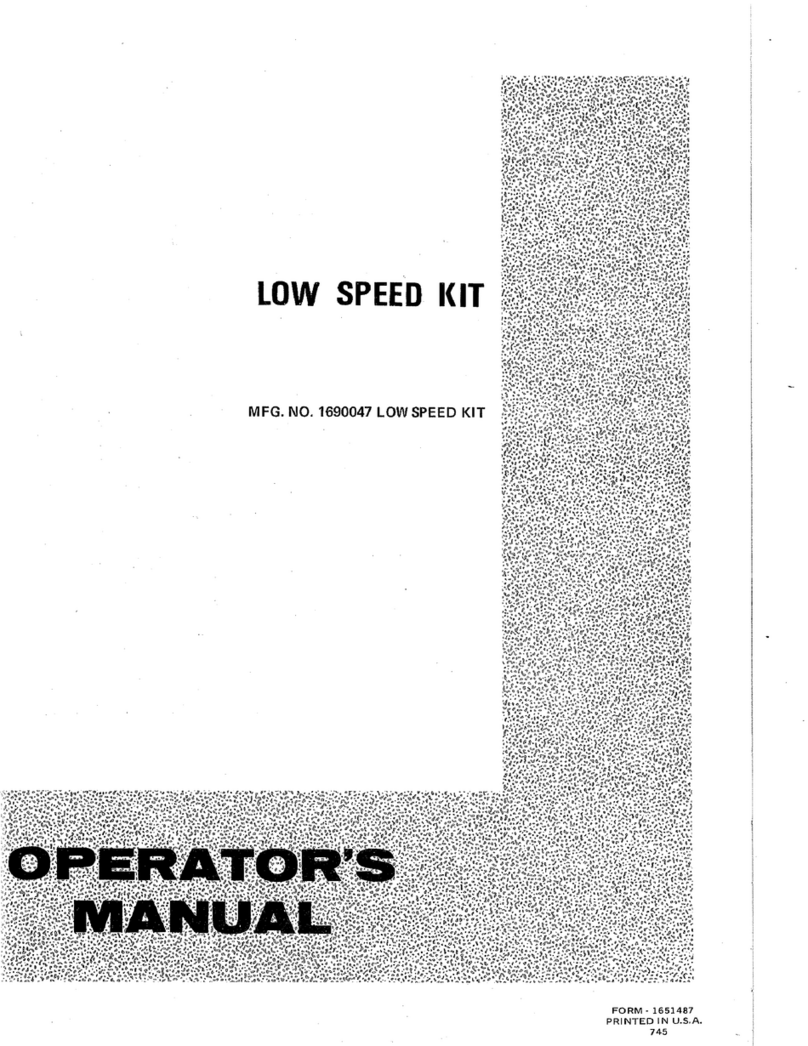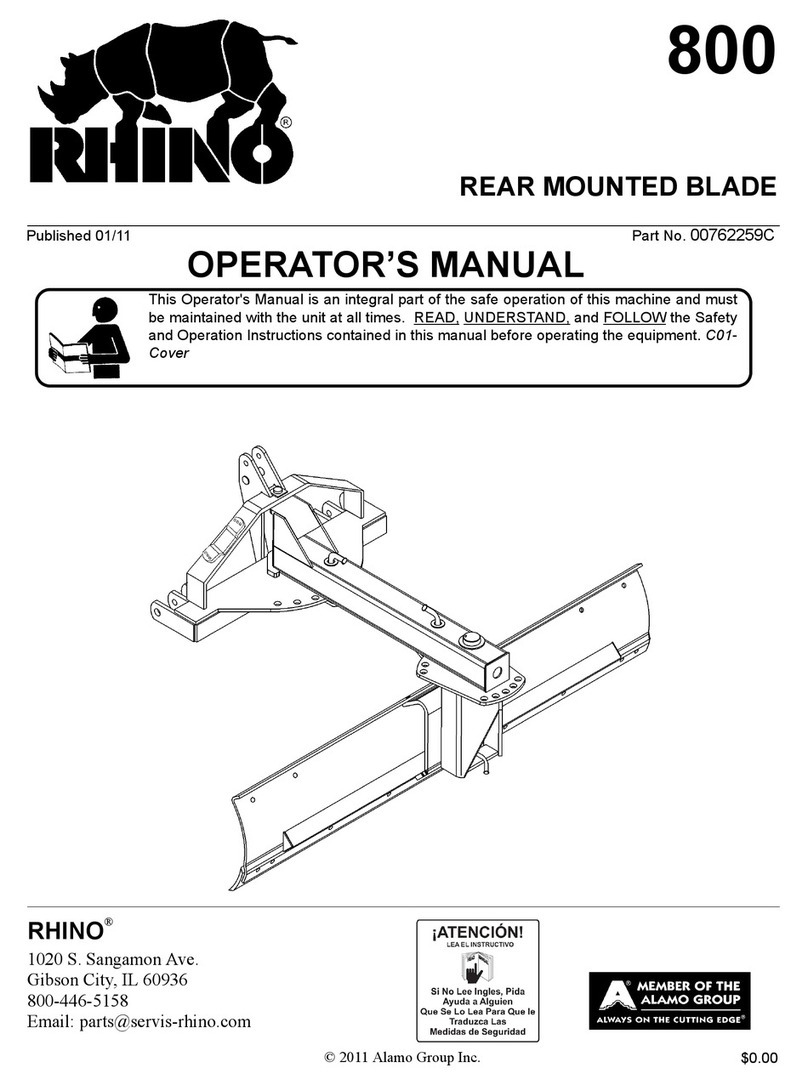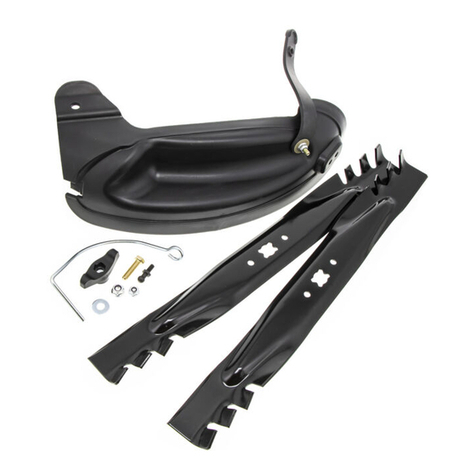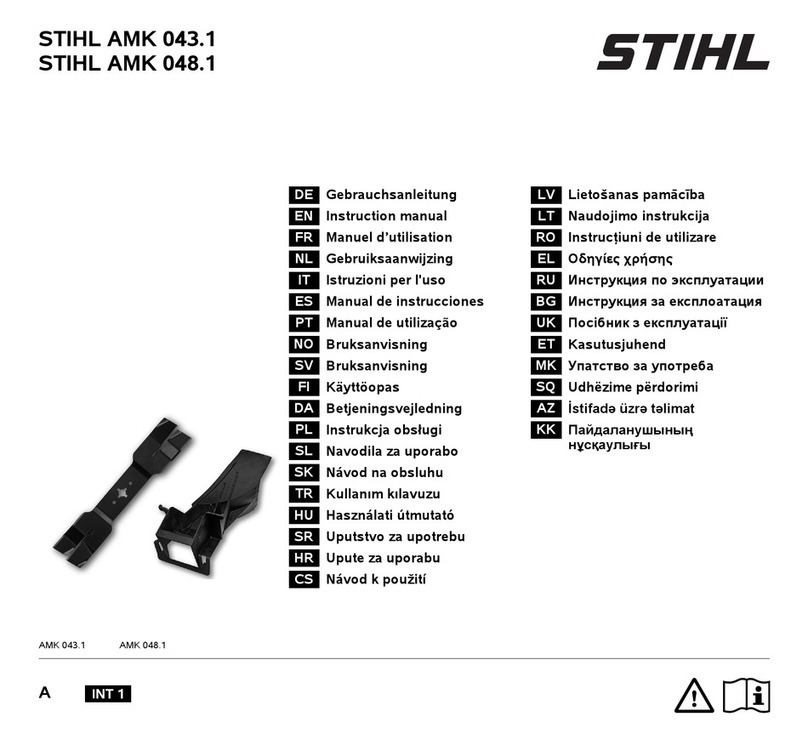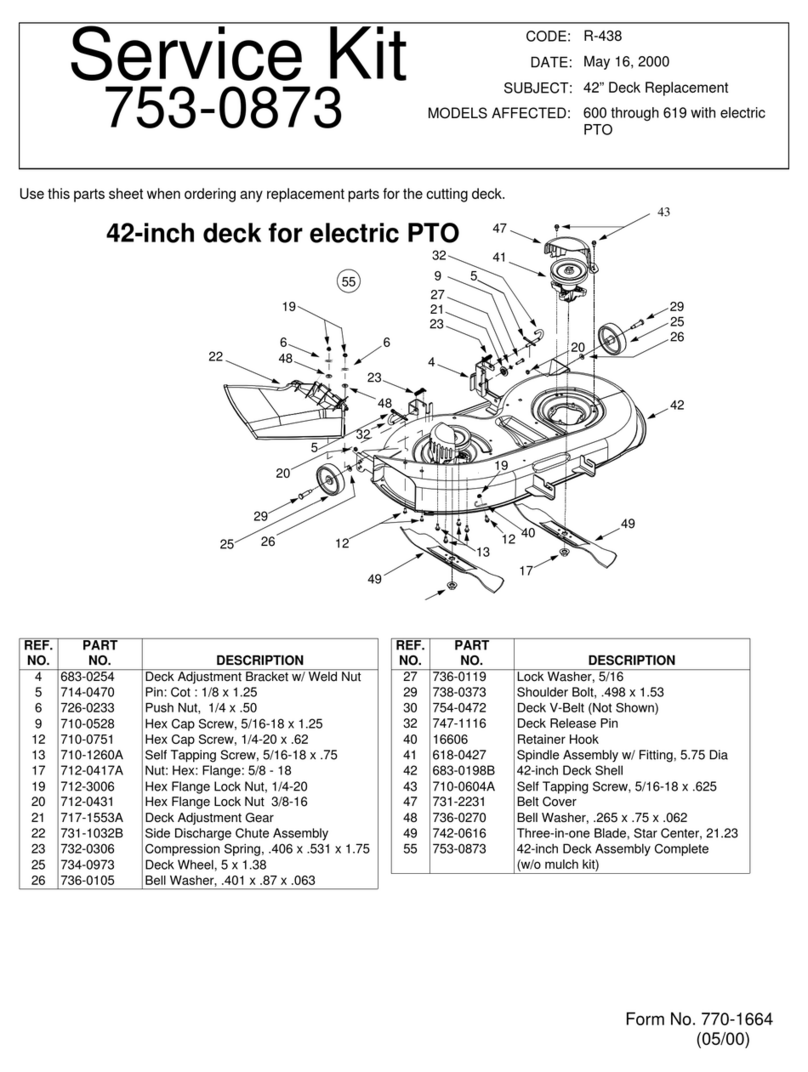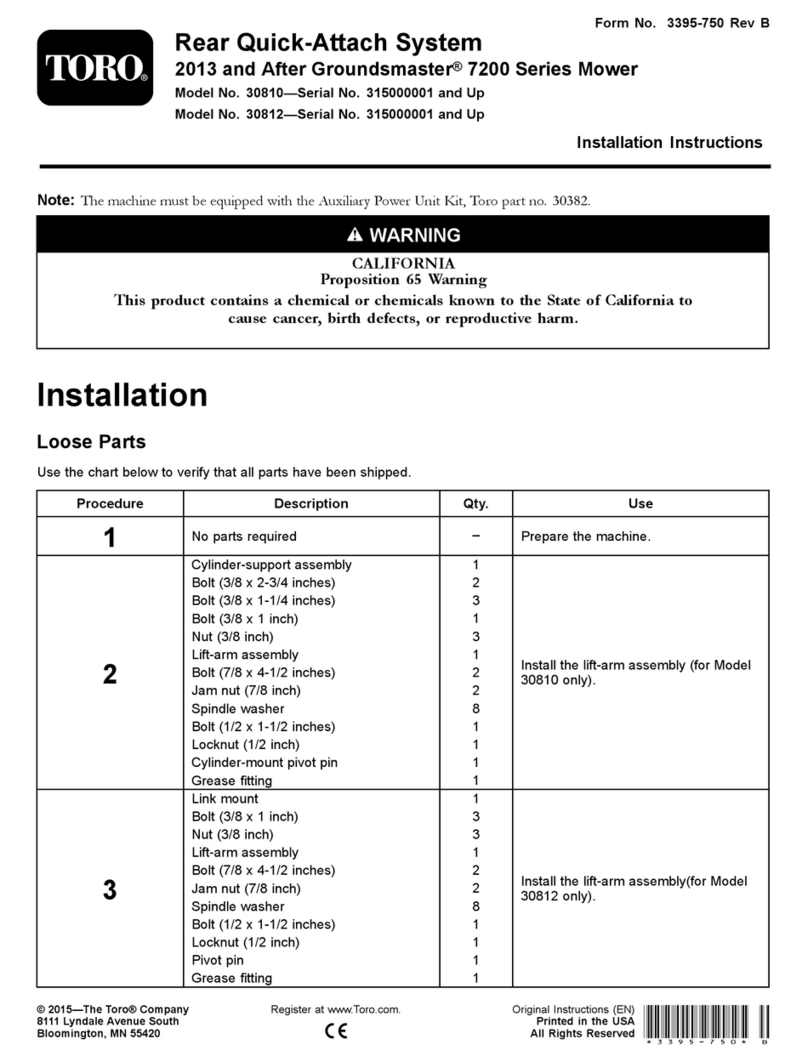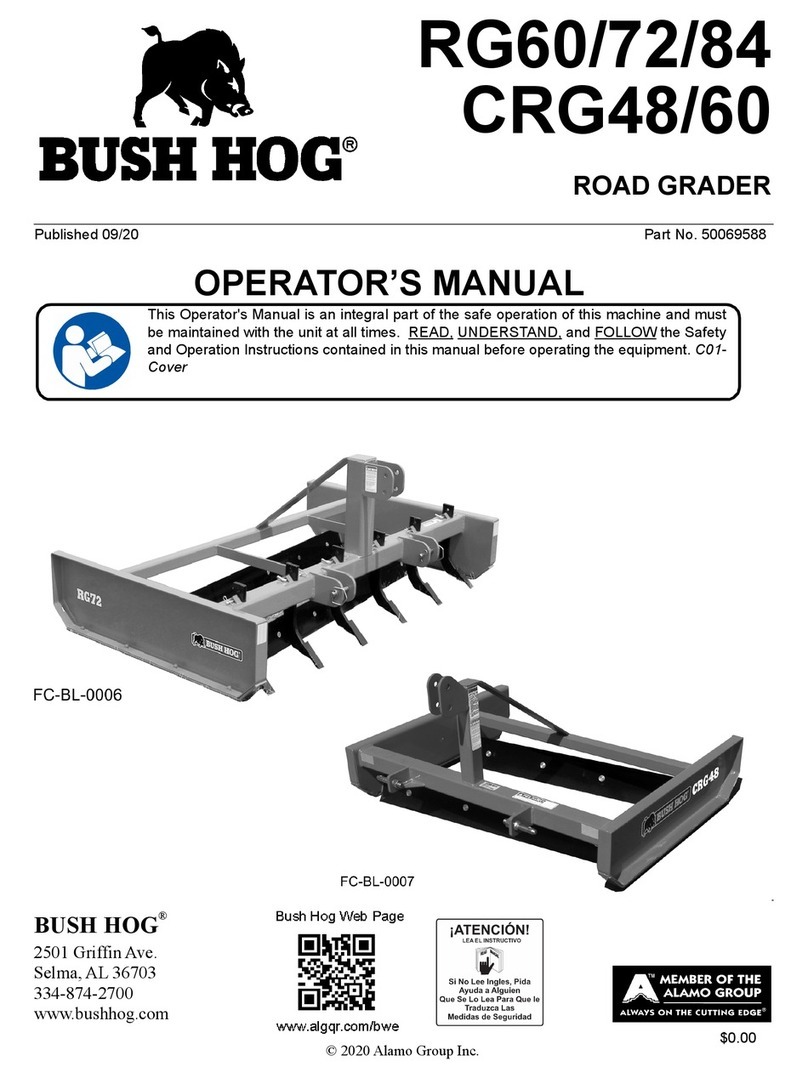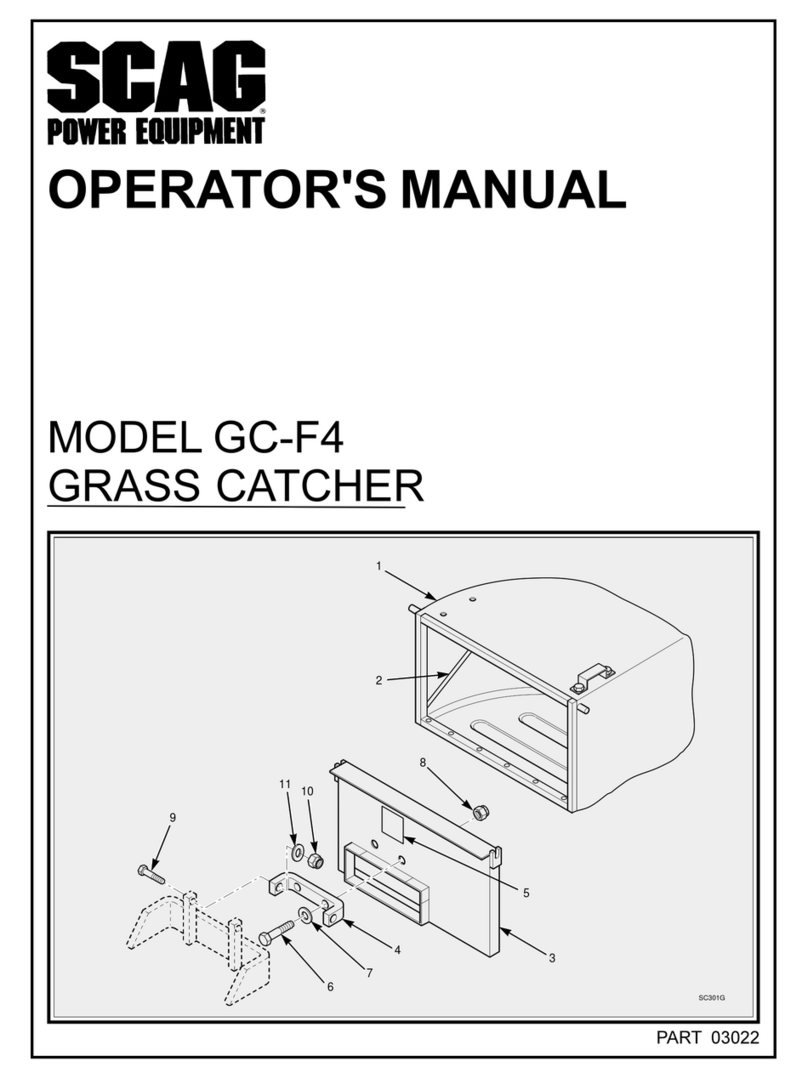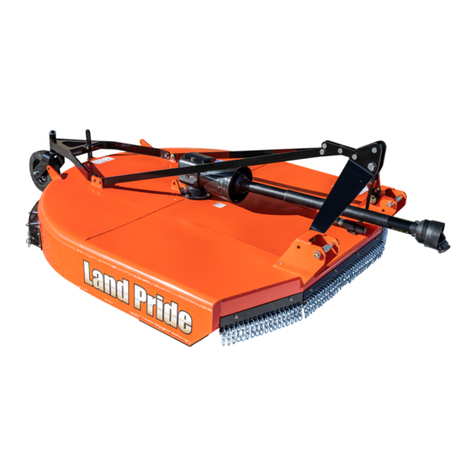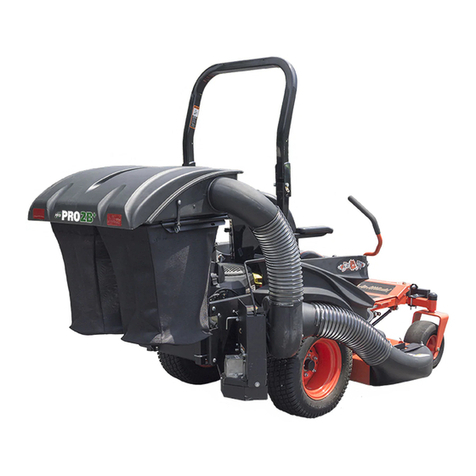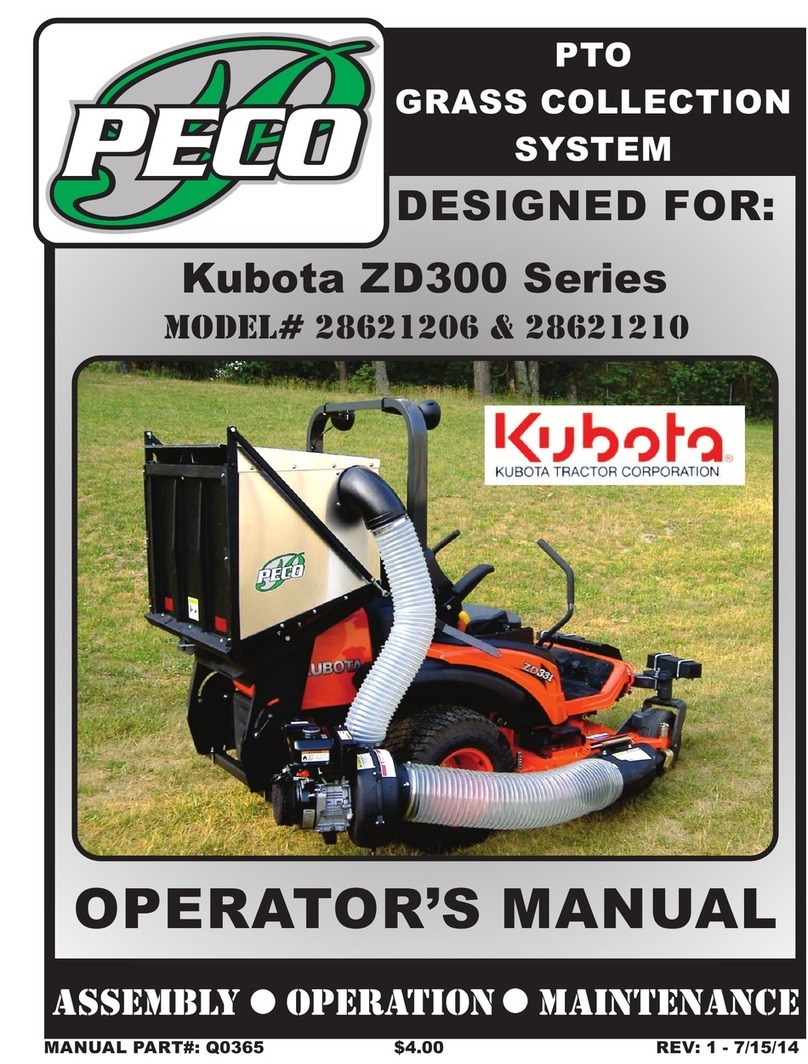HUSTLER Zevo User manual

127675 REV B
Hustler® Zevo™
Operator’s Manual
200 South Ridge Road
Hesston, Kansas
67062

REV B 127675
WARNING
PROPOSITION 65 WARNING: Battery posts, ter-
minals and related accessories contain lead and
lead compounds, chemicals known to the State of
California to cause cancer and reproductive harm.
Batteries also contain other chemicals known to
the State of California to cause cancer. WASH
HANDS AFTER HANDLING

127675 toc-1 REV B
TABLE OF CONTENTS
General Information. . . . . . . . . . . . . . . . . . . . . . . . . . . . . . . . . . . . . . . . . 1-1
To the New Owner . . . . . . . . . . . . . . . . . . . . . . . . . . . . . . . . . . . . . . . 1-1
Using this Manual . . . . . . . . . . . . . . . . . . . . . . . . . . . . . . . . . . . . . . . 1-1
Warranty Registration . . . . . . . . . . . . . . . . . . . . . . . . . . . . . . . . . . . . 1-1
Model and Serial Number . . . . . . . . . . . . . . . . . . . . . . . . . . . . . . . . . 1-1
Parts and Service . . . . . . . . . . . . . . . . . . . . . . . . . . . . . . . . . . . . . . . . 1-1
Product Literature . . . . . . . . . . . . . . . . . . . . . . . . . . . . . . . . . . . . . . . 1-1
Safety Precautions. . . . . . . . . . . . . . . . . . . . . . . . . . . . . . . . . . . . . . . . . . 2-1
Safe Operating Practices . . . . . . . . . . . . . . . . . . . . . . . . . . . . . . . . . 2-1
Service Precautions. . . . . . . . . . . . . . . . . . . . . . . . . . . . . . . . . . . . . . 2-4
Safety and Instructions Decals. . . . . . . . . . . . . . . . . . . . . . . . . . . . . 2-5
Operation . . . . . . . . . . . . . . . . . . . . . . . . . . . . . . . . . . . . . . . . . . . . . . . . . 3-1
Safe Operating Practices . . . . . . . . . . . . . . . . . . . . . . . . . . . . . . . . . 3-1
Control Panel . . . . . . . . . . . . . . . . . . . . . . . . . . . . . . . . . . . . . . . . . . . 3-1
Controls. . . . . . . . . . . . . . . . . . . . . . . . . . . . . . . . . . . . . . . . . . . . . . . . 3-1
Safety Start Interlock System . . . . . . . . . . . . . . . . . . . . . . . . . . . . . . 3-1
Mower Operation . . . . . . . . . . . . . . . . . . . . . . . . . . . . . . . . . . . . . . . . 3-3
Deck Cutting Height Adjustment . . . . . . . . . . . . . . . . . . . . . . . . . . . 3-6
Battery Charger . . . . . . . . . . . . . . . . . . . . . . . . . . . . . . . . . . . . . . . . . 3-6
Maintenance & Adjustments . . . . . . . . . . . . . . . . . . . . . . . . . . . . . . . . . 4-1
Safe Servicing Practices . . . . . . . . . . . . . . . . . . . . . . . . . . . . . . . . . . 4-1
Service Introduction. . . . . . . . . . . . . . . . . . . . . . . . . . . . . . . . . . . . . . 4-1
Torque Values . . . . . . . . . . . . . . . . . . . . . . . . . . . . . . . . . . . . . . . . . . 4-1
Tires. . . . . . . . . . . . . . . . . . . . . . . . . . . . . . . . . . . . . . . . . . . . . . . . . . . 4-1
Transmissions . . . . . . . . . . . . . . . . . . . . . . . . . . . . . . . . . . . . . . . . . . 4-1
Mower Blades. . . . . . . . . . . . . . . . . . . . . . . . . . . . . . . . . . . . . . . . . . . 4-1

REV B toc-2 127675
Seat Adjustment. . . . . . . . . . . . . . . . . . . . . . . . . . . . . . . . . . . . . . . . . 4-3
Steering Control Lever Adjustment . . . . . . . . . . . . . . . . . . . . . . . . . 4-4
Maintenance Locator Chart . . . . . . . . . . . . . . . . . . . . . . . . . . . . . . . 4-6
Maintenance Record . . . . . . . . . . . . . . . . . . . . . . . . . . . . . . . . . . . . . 4-7
Troubleshooting. . . . . . . . . . . . . . . . . . . . . . . . . . . . . . . . . . . . . . . . . . . . 5-1
Storage . . . . . . . . . . . . . . . . . . . . . . . . . . . . . . . . . . . . . . . . . . . . . . . . . . . 6-1

127675 1-1 REV B
GENERAL INFORMATION
This manual applies to the following Hustler® Turf
Equipment equipment lines:
Hustler® Zevo™
To the New Owner
Hustler® Zevo™ mower owners and operators must read
this manual carefully. It contains operation and maintenance
information that will help you achieve years of dependable
service.
The owner’s responsibilities include, but are not limited to,
making certain that the operators and mechanics:
•read and understand the mower’s operator manual and
all decals before operating this machine.
•are qualified and physically able individuals, properly
trained in the operation and maintenance of this
equipment. Before they are allowed to operate or
maintain this machine, they must be familiar with its
safe operation, operator controls, and decals.
•know they are responsible for their own safety as well
as the safety of other persons within the vicinity.
Remember, the operator is responsible for accidents or
hazards occurring to other people or their property.
IMPORTANT: As the owner/operator you can prevent
accidents. You are responsible for accidents or injuries
occurring to yourself, other people or property.
Never let children or untrained people operate or service the
equipment. Local regulations may restrict the age of the
operator.
For more detailed maintenance and adjustment information
refer to the proper General Service Manual for your machine.
Refer to the Product Literature section of this manual for
information on how to obtain this manual.
Using this Manual
This manual contains general operation information as well
as basic adjustment and maintenance information. Since
operating conditions vary considerably, all conditions cannot
be addressed individually. Through training and experience,
operators should develop safe operating practices suitable to
most conditions.
Directions used in this manual, for example RIGHT or LEFT,
refer to directions when in the operator position and facing
forward, unless otherwise stated.
Though current at the time of printing, photographs and
illustrations shown may vary slightly from your mower due to
subsequent production changes. Hustler® Turf Equipment,
Inc. reserves the right to redesign and change the machine as
deemed necessary, without notification. If a change has been
made to your machine which is not reflected in this manual,
contact your Hustler® Dealer for current information.
Warranty Registration
To activate your warranty policy the mower must be
registered, by your Dealer, with the Manufacturer of Hustler®
Turf Equipment within ten (10) days following the date of
purchase. It is recommended that you contact your Dealer to
make sure the mower is registered.
IMPORTANT: The mower and any attachment that
displays a model and serial identification number plate must
be registered with Excel Industries, Inc., manufacturer of
Hustler® Turf Equipment, Inc (“Manufacturer”).
IMPORTANT: Any unauthorized modification, alteration, or
use of non-approved attachments voids the warranty and
releases Manufacturer from any liability arising from
subsequent use of this equipment. Do not use or operate any
attachment not approved by Hustler® Turf Equipment, Inc.
IMPORTANT: Damage caused by unauthorized
replacement parts is not covered by this warranty.
Manufacturer expressly excludes liability for defects or
damage caused by such 'unauthorized' articles or service.
Model and Serial Number
Mower model and serial numbers are found on the serial
identification plate, located below the left fender.
These numbers are required when the unit is registered with
Hustler® Turf Equipment. They will also assure you of the
correct service parts when replacement becomes necessary.
Parts and Service
Use original Hustler® replacement parts, or parts that are
equivalent in overall performance, that are available from your
local Hustler® Dealer. For prompt, efficient service, always
provide the following information when ordering parts:
1. Correct part description.
2. Correct part number.
3. Correct model number.
4. Correct serial number.
All arrangements for warranty repair and service must be
handled through an authorized Hustler® Dealer.
Product Literature
If you would like to view or print a copy of the product
manuals (Operator’s Manual, Parts Manual, or General Service
Manual) for these mowers go online to www.hustlerturf.com.
Table of contents
Other HUSTLER Lawn Mower Accessories manuals
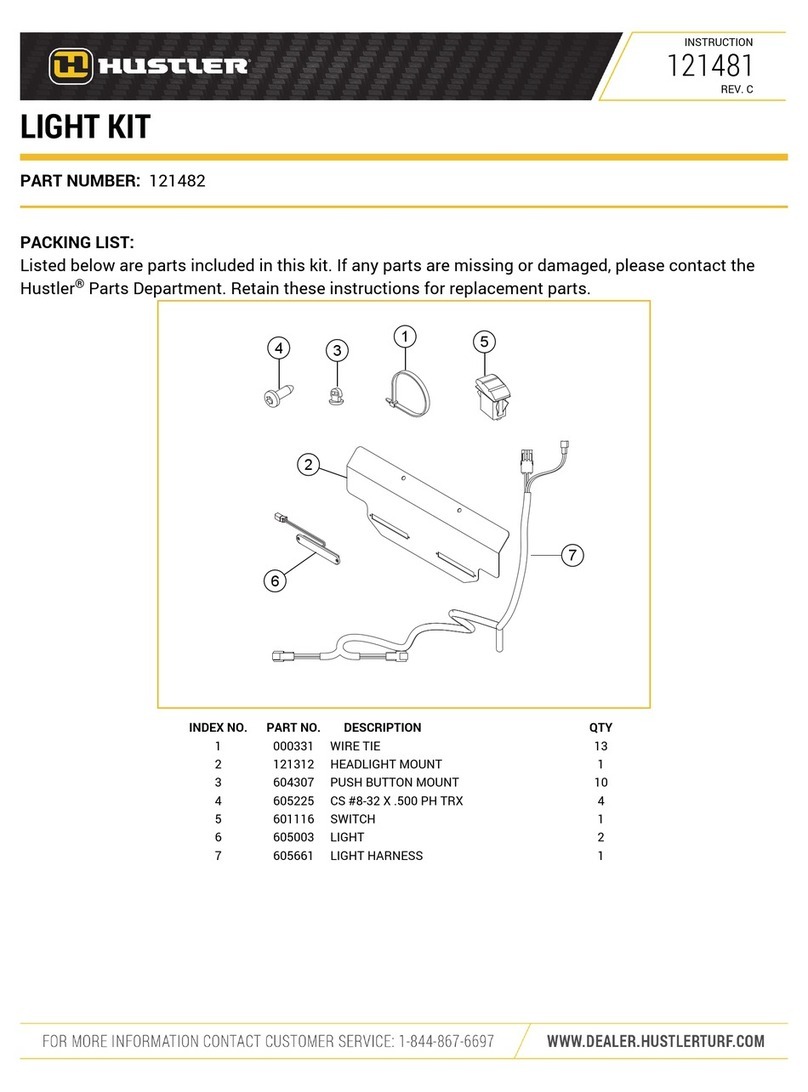
HUSTLER
HUSTLER 121482 User manual
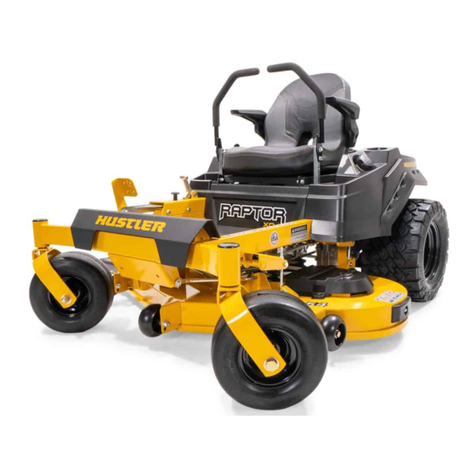
HUSTLER
HUSTLER 939769 User manual
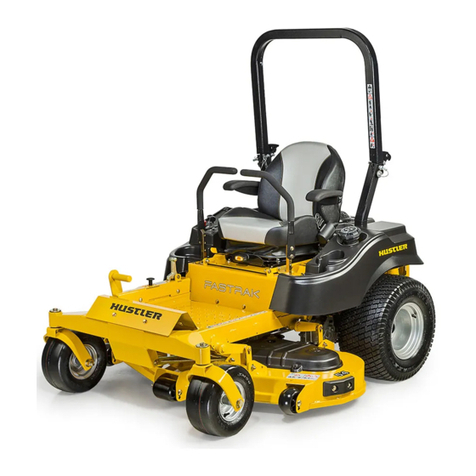
HUSTLER
HUSTLER 940353EX User manual
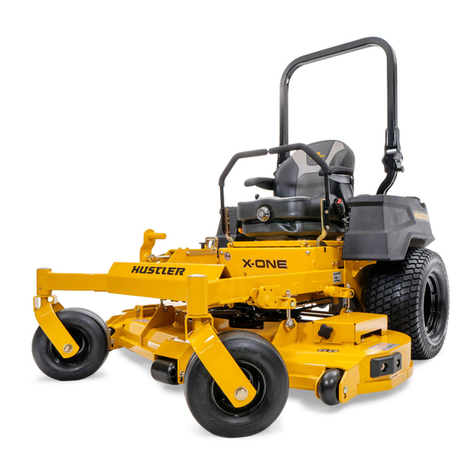
HUSTLER
HUSTLER X-ONE User manual
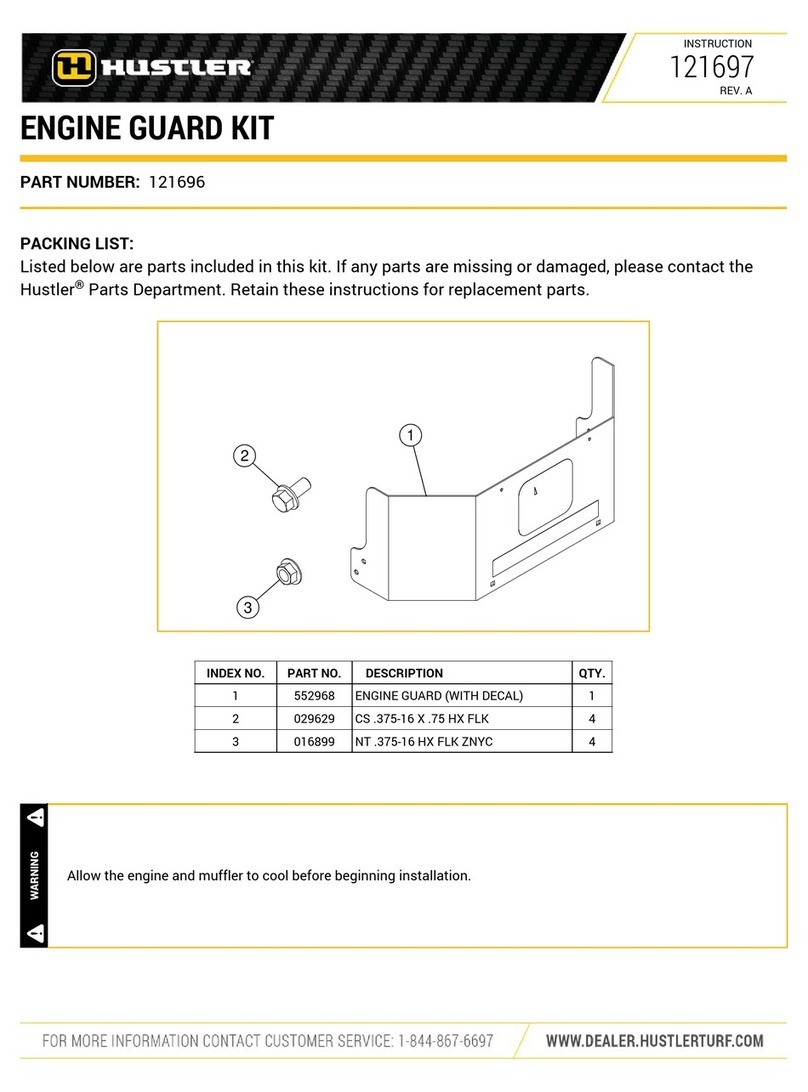
HUSTLER
HUSTLER 121696 User manual
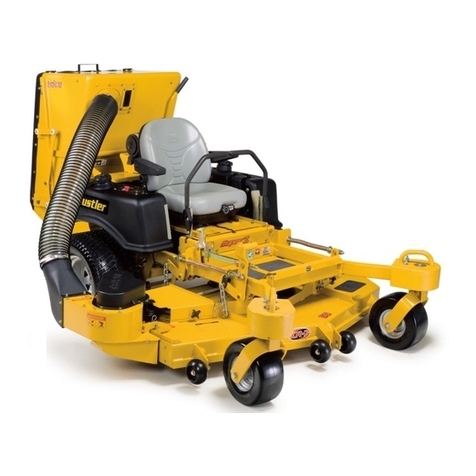
HUSTLER
HUSTLER BAC-VAC User manual

HUSTLER
HUSTLER X-ONE User manual
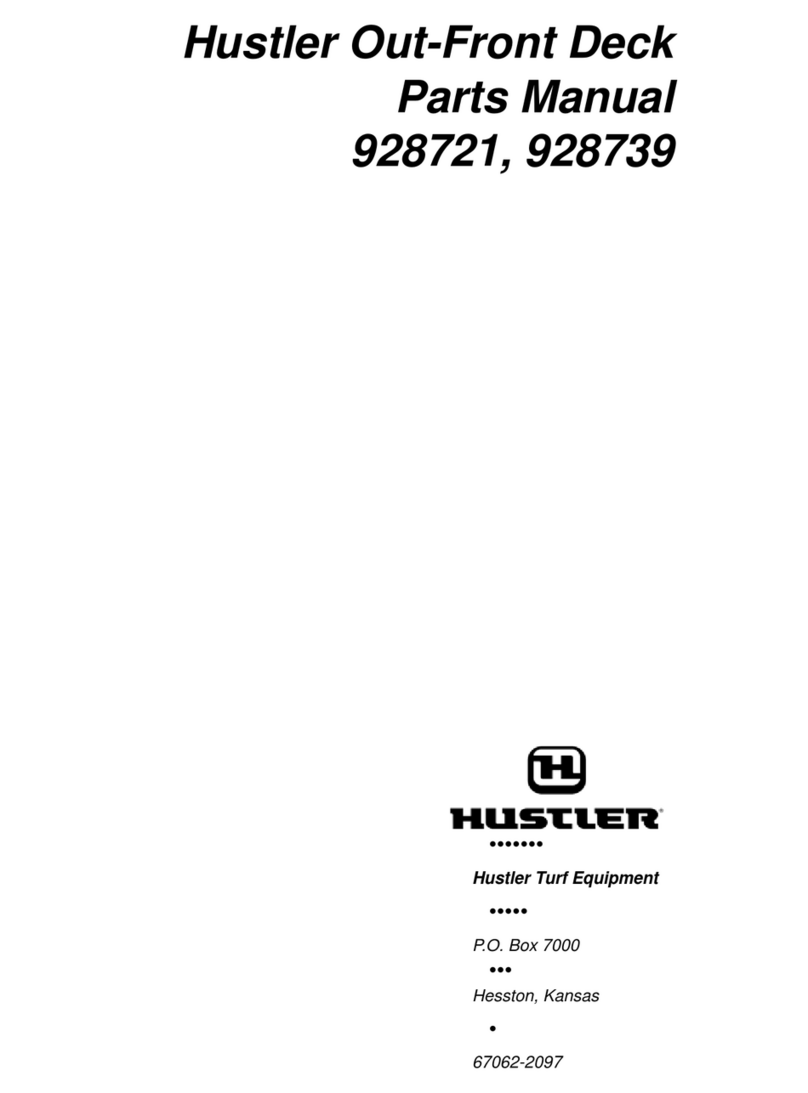
HUSTLER
HUSTLER 928739 User manual
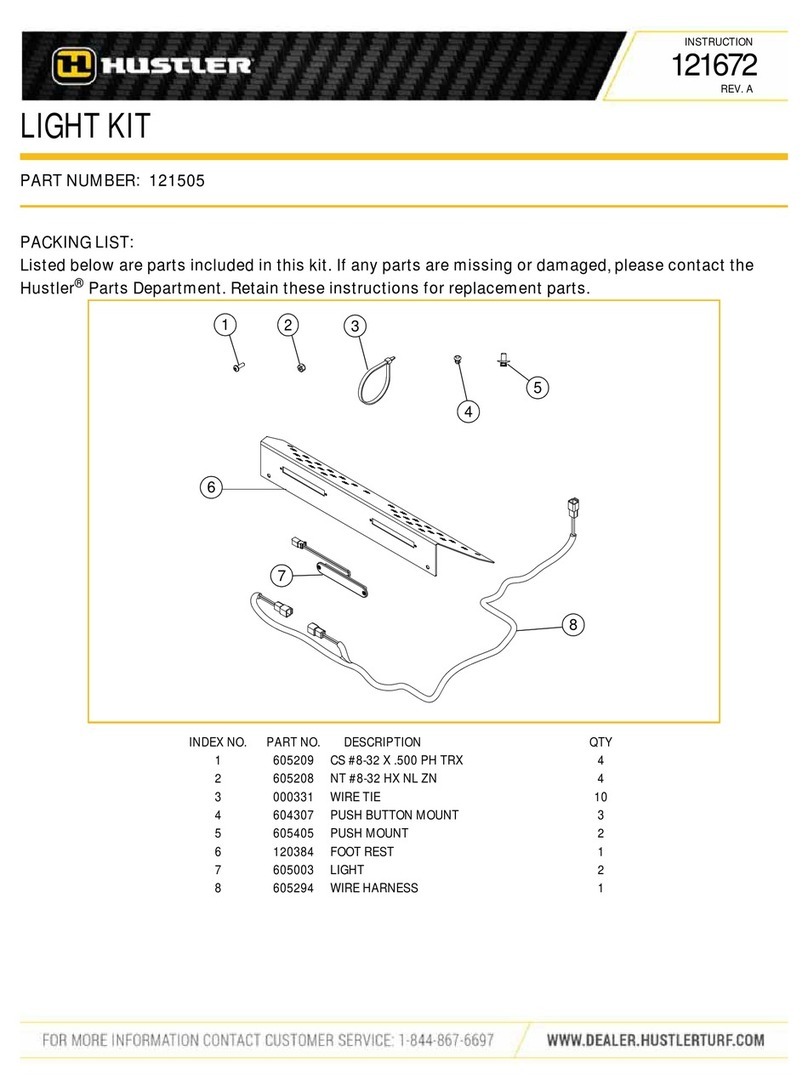
HUSTLER
HUSTLER 121505 User manual
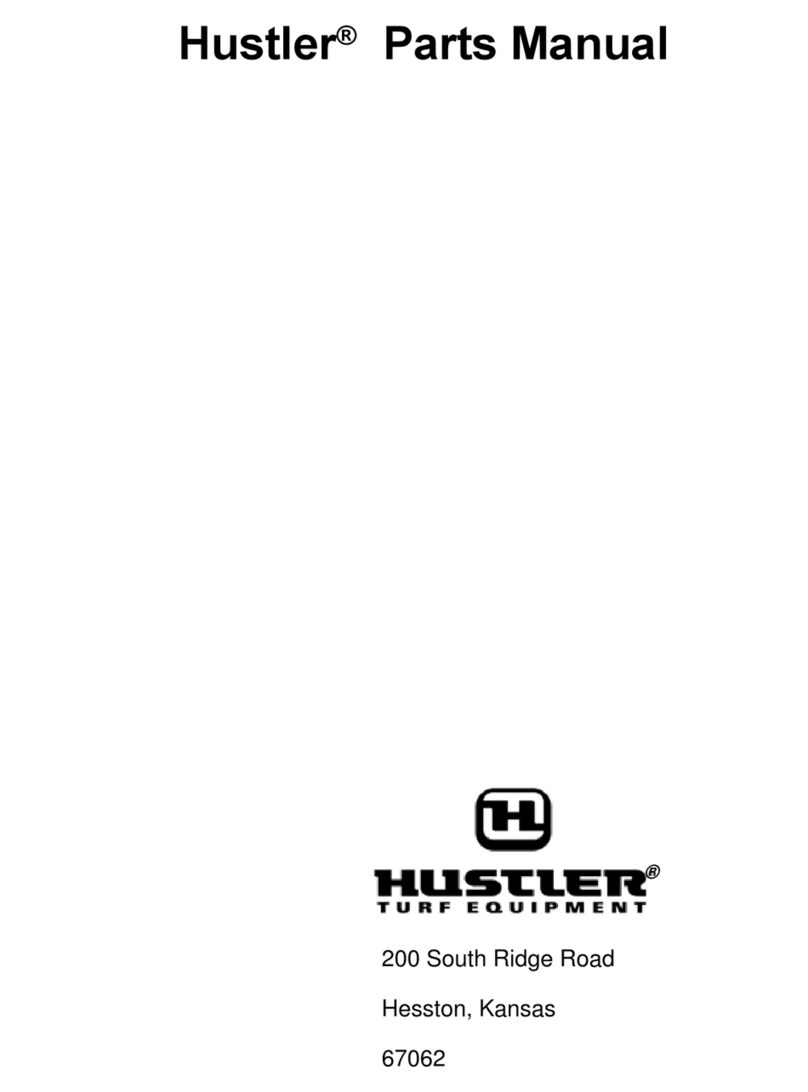
HUSTLER
HUSTLER 67062 User manual
